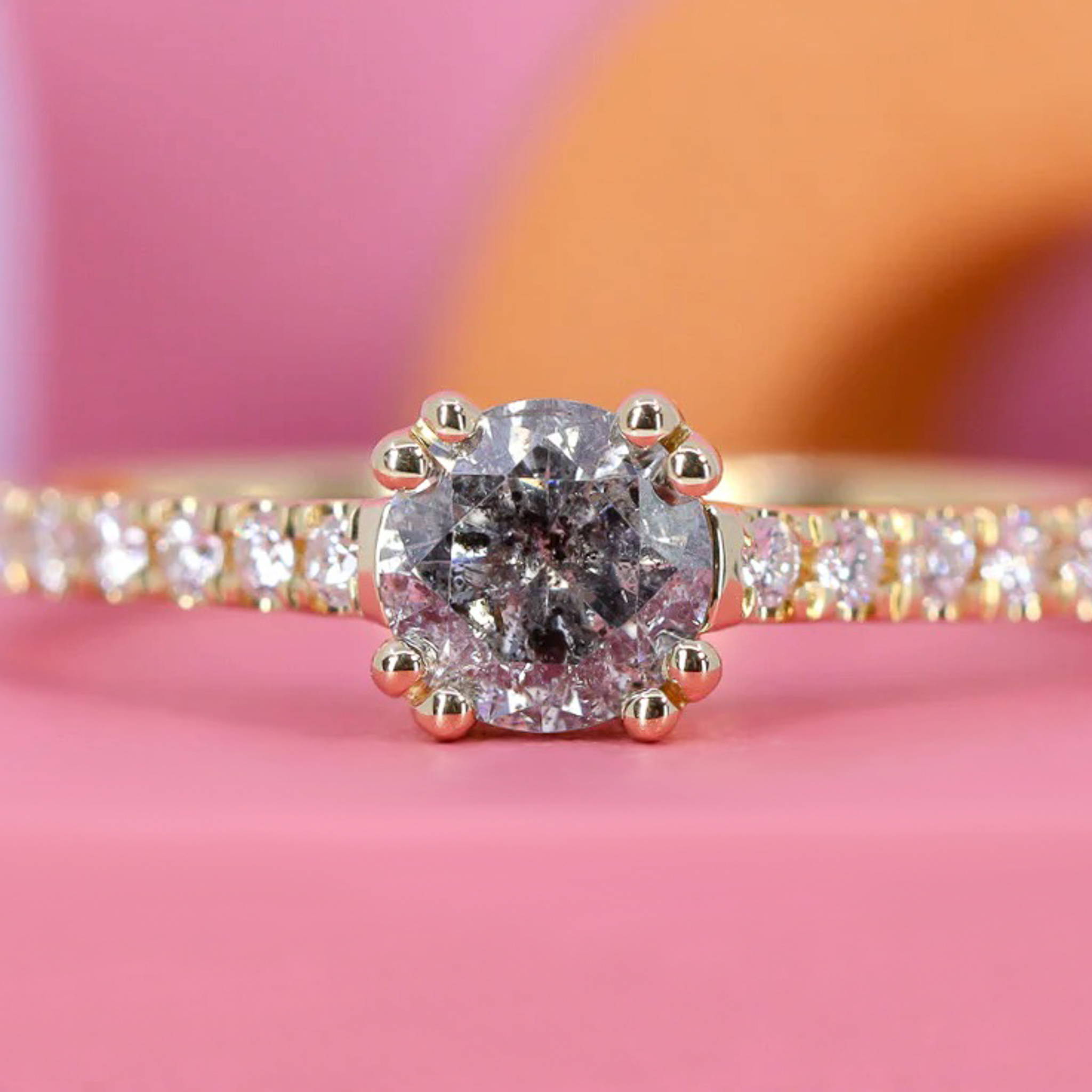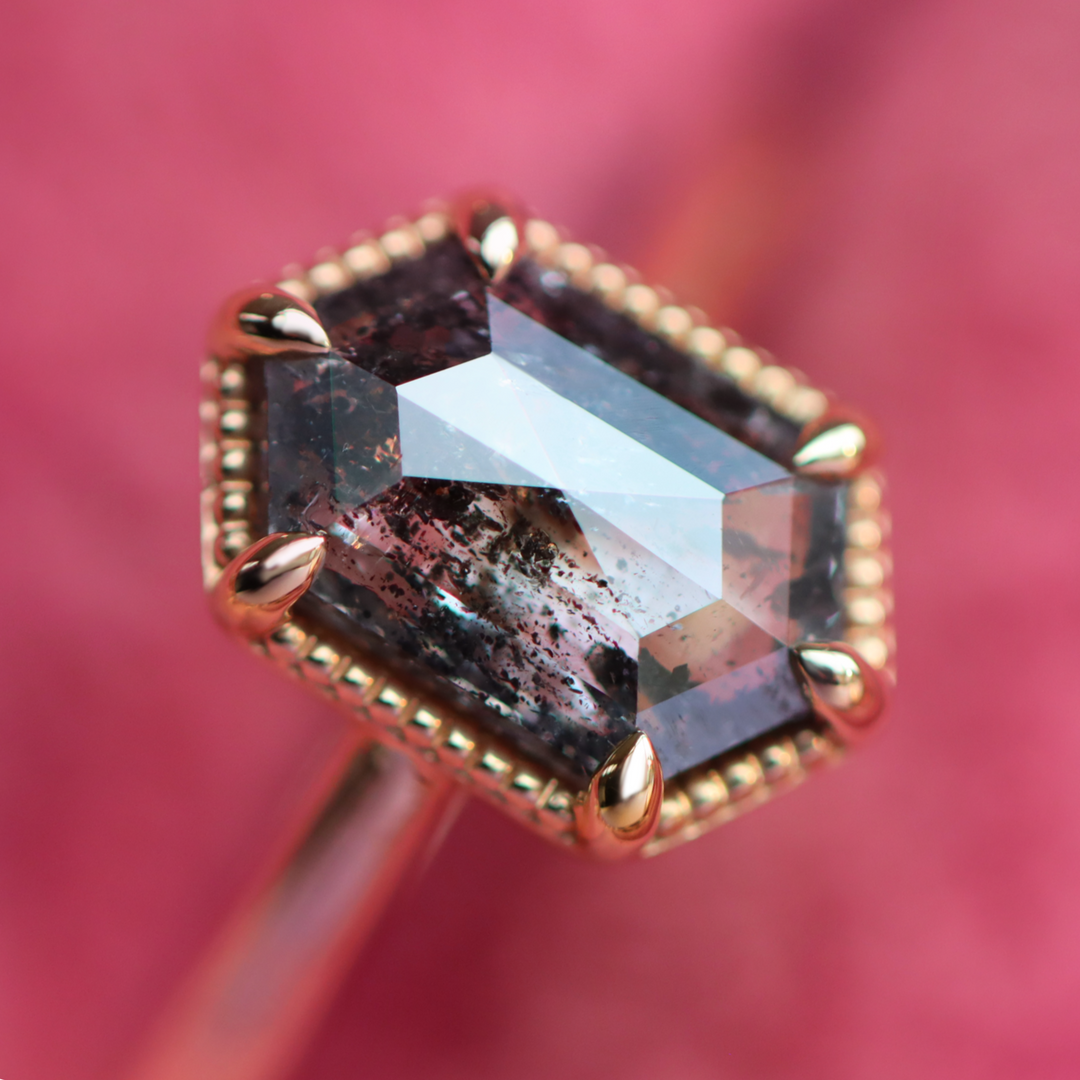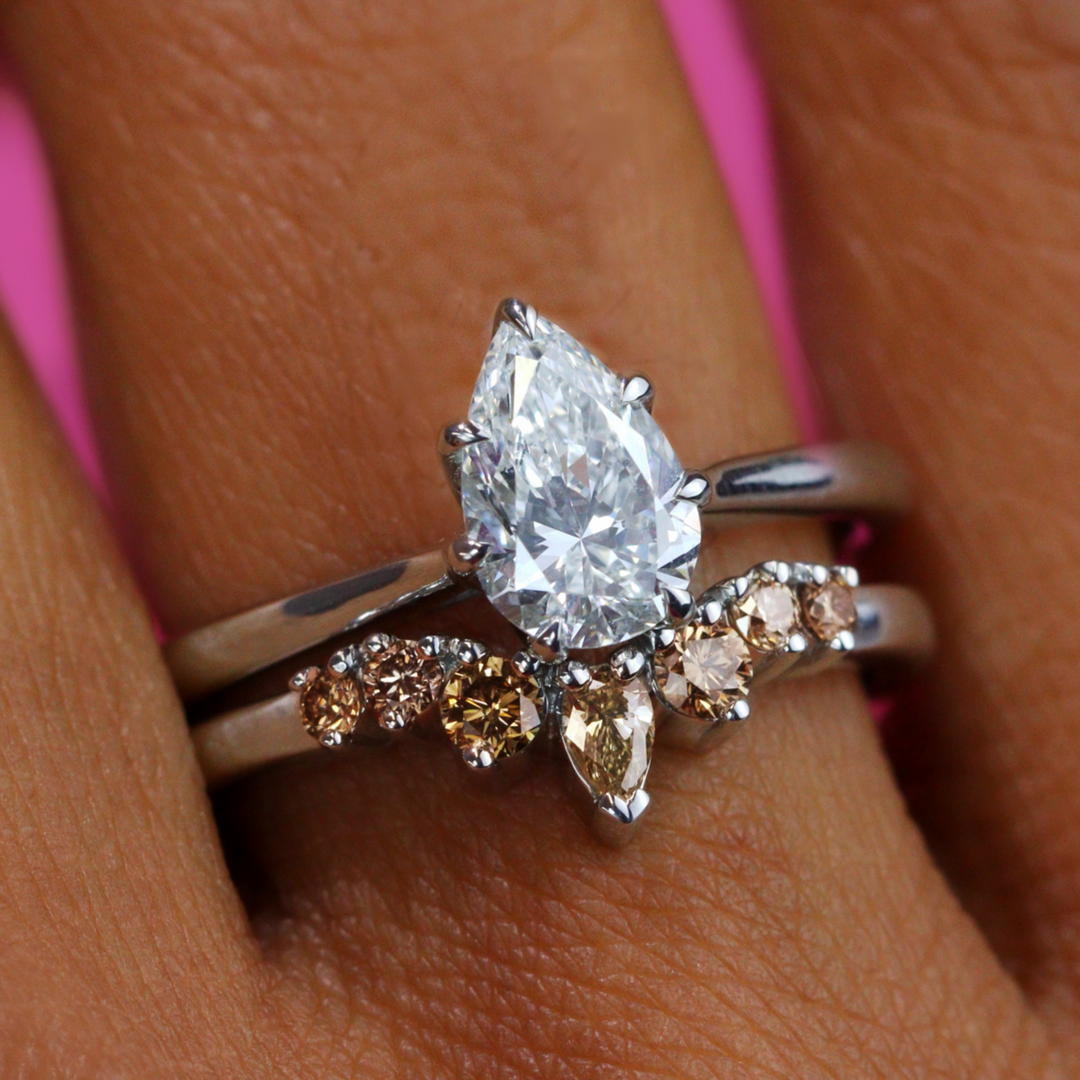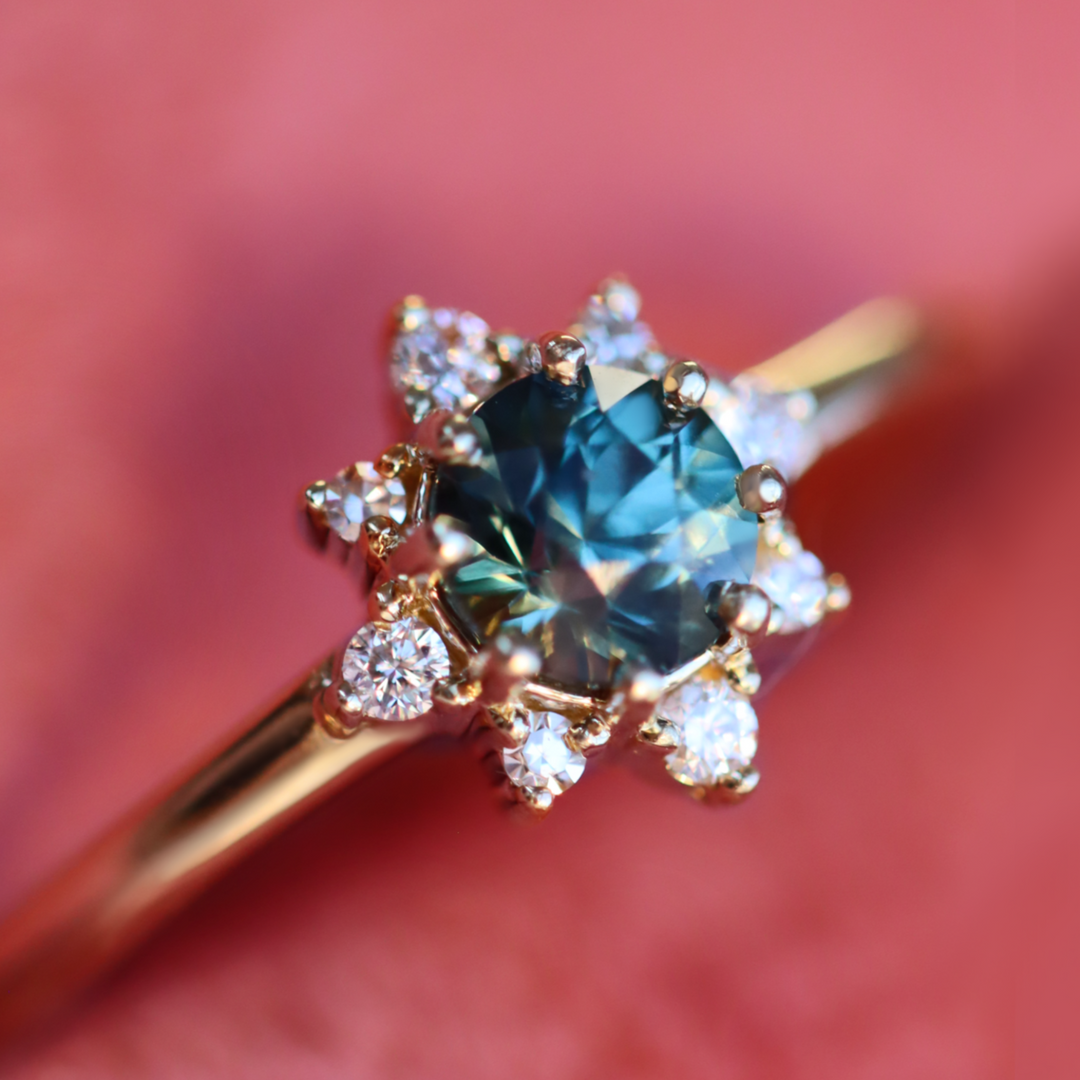
FIVE WAYS TO SAVE ON YOUR ENGAGEMENT RING
Believe it or not, December is one of the most popular months to propose. The romance of Christmas, time spent staying cosy and warm indoors and the possibility of snow makes winter a perfect backdrop for popping the question.

An engagement ring will always be a big purchase, and this is especially true at the moment. The average spend on a Jessica Flinn engagement ring is £2490, with options ranging from £1500 to over £10,000. We’ve spoken to lots of customers who want to know how to get the most out of their budget, without compromising on size. Although some of our customers have decided to wait, many say they just can’t wait any longer. Lucky for them, we’re specialists in sourcing amazing alternatives which won’t break the bank. Here are our top tips on how you can find their perfect engagement ring on a budget:
Engagement rings are traditionally made in precious metals. Whilst we typically make our ready to ship pieces in platinum or 18ct gold, if you’re looking at a custom or bespoke ring, we can make this in any metal of your choice. Choosing 14ct white gold could save you £170 versus platinum, whilst 9ct white gold could save you £420. Likewise, the price difference between 9ct and 18ct gold is £400 for yellow and rose gold. This increases to £660 for white gold thanks to the cost of palladium, which is used as an alloy and colour stabiliser - white gold also needs to be rhodium plated, which is one of the most expensive metals in the world.
WHY ARE LOWER CARATS CHEAper?
When we talk about carats in relation to gold, we’re referring to its purity. Gold for everyday wear is alloyed with other metals, such as zinc, silver and copper. The higher the carat, the higher the ratio of gold to alloys, which means the higher the price.

white gold versus platinum
If you’re set on a white metal and are stuck between 18ct white gold and platinum, we would always recommend platinum. Although metal prices fluctuate, Platinum is often more affordable than 18ct white gold. Palladium, one of the alloys used to stabilise its white colour, is expensive thanks to its use in catalytic converters. If that wasn’t enough, rhodium, which is used to plate your ring to give it its polished finish, is also the most expensive metal per gram on the planet, at 12 x the price of gold.
TWO: consider alternative diamonds
For many years we’ve been told that white diamond engagement rings are the only engagement rings. Well we’re here to ask ‘says who?’ There’s so many incredible and more affordable diamonds out there, so let’s talk you through the options and what they mean for your engagement ring budget.

LAB GROWN DIAMONDS
Lab grown diamonds are surging in popularity. They’re a more ethical and affordable alternative to mined white diamonds, boasting the same brilliance, personality and sparkle. In the past six months, 92% of our white diamonds centre stone engagement rings have been lab grown, which we sourced from our trusted suppliers.
One of our favourite things about lab grown diamonds is the science behind them. Mined diamonds are formed under the earth’s surface over millions, if not billions of years, with deposits pushed up to the surface by volcanic activity. In contrast, a lab grown diamond can be created in just weeks. Using a seed diamond, a chamber with the perfect temperature, gases and pressure created the perfect environment for it to grow. Once cut and polished, it’s impossible to tell them apart by eye.
SALT & PEPPER DIAMONDS
When pricing traditional white diamonds, valuers will consider the 4cs; colour, clarity, cut and carat. The most valuable diamonds in the world are colourless and flawless, without imperfections. Whilst beautiful, they’re not the only diamonds to find their way out of the ground.
Once cast aside by the traditional diamond industry, salt and pepper diamonds throw the 4cs rulebook out of the window. They are heavily included, with specs, flecks, feathers and more trapped within the diamonds. When it comes to colour, they range from milky white and grey, to almost black, and can even feature flashes of red, and orange. To us, and many of our customers, they are beautiful. Our favourite thing about salt and pepper diamonds is that the inclusions within the diamond were probably trapped there millions of years ago - perhaps when the dinosaurs were walking the earth. It’s a piece of history you can wear on your hand, with each diamond showcasing its own unique inclusions and story.
When it comes to price, salt and pepper diamonds are much much more affordable than white diamonds. Choosing a salt and pepper diamond centre stone over a mined white diamond could save you £1000’s. There are also many more options when it comes to cut, shape and size.


THREE: cHOOSE AN ALTERNATIVE COLOURED GEMSTONE
Browse the shop front of any high street jewellers and you will see three coloured gemstone options, blue sapphires, red rubies and green emeralds. Compare this to our showroom or website, and you’ll see that there’s a whole rainbow of colourful gemstones waiting to be discovered.

SAPPHIRES, BUT NOT AS YOU KNOW THEM
Did you know that there are so many more sapphire options than blue? We work with various shades of blue, teal, green, violet, pink and more. The most popular shade by far is teal, which covers a whole spectrum of shades ranging from greener hues, to bluer hues. One of our favourite sapphires to work with in this family of colours is ‘parti sapphires’. Mainly found in Australia and Madagascar, they are bi-coloured, which means that they are different shades of blue, green and yellow throughout.
When it comes to budget, sapphires are one of the pricier coloured gemstones, however they are often more affordable than white diamonds. Let’s take a look at some of the other options...

Can WE TEMPT YOU WITH TOURMALINES?
One of our favourite gemstones to work with, Tourmalines are bold, bright and colourful. They boast a dazzling array of vivid colours, including blue, green, pink, purple and more. If you take a look at our tourmaline collection, you’ll see that we favour a style of cutting called an ‘optix cut’. In short, this fancy method of cutting these gemstones makes them super sparkly and reflect the light in an amazing way. And when it comes to budget, tourmalines make many of our designs much more affordable, with a 1.50ct tourmaline engagement ring costing you less than £2500.

Our best kept secret? spinel!
A relative newcomer to the Jessica Flinn line up, Spinels are a lesser known colourful gemstone and are set to have a moment in 2023/24. Like the other coloured gemstones we use, they can be sourced in a beautiful selection of colours, however we navigate towards purples and blues, as these shades in Spinel are something else. With warming hues of lavender, we think they are incredibly beautiful. And they are just as affordable as tourmalines.
four: cHOOSE smaller accent stones
If you’re searching for some white diamond back up dancers to sparkle alongside your centre stone, this can quickly eat into your budget. Larger side stones, particularly in designs such as our Dahlia trilogy design which includes kite shaped side stones, and Art Deco designs like Ophelia with curved trilliant diamonds, demand a higher budget because of their size, cut and quality. However, you don’t need large side stones to create drama. To make your budget go further, we recommend choosing lots of smaller diamonds in a unique design.
Natalia is one of our more affordable settings, and includes delicate white diamonds with simple bead detailing - this gives the illusion of more diamonds, with the design tapering at either side. Grace is wonderfully Art Deco and has stepped bars set with diamonds. And Henrietta features three smaller diamonds in a cluster to either side of the centre stone. Choosing many smaller diamonds is always more affordable than fewer larger diamonds - and you can still find a design with drama and sparkle.
fIVE: GO ROSE CUT
Rose cuts gained popularity within the early days of jewellery. They are considered old fashioned, as cutting techniques have really come on since then, however for salt and pepper diamonds, this way of cutting is making a huge comeback.
Quite simply, rose cut diamonds and gemstones have a flat bottom, which means that you get more surface area for your budget. Whilst a traditional cut is tapered towards the bottom of the stone, with a portion of the gemstone hidden within the setting, in a rose cut stone this carat weight is spread across the surface of the stone, giving the impression that it is bigger than it really is. The reason this works so well for salt and pepper diamonds is that they are semi-transparent, unlike traditional diamonds which are fully transparent. For darker diamonds, they wouldn’t benefit from facets beneath the stone, so instead the facets are cut across the top. They catch the light beautifully, and offer so much flexibility with unique shapes. This is why you’ll often see lots of unusual and geometric rose cut salt and pepper diamonds.
need some help?
You don’t need to navigate finding your perfect alternative engagement ring on your own. Why not be your own jewellery designer and create your own Jessica Flinn ring using our ‘Design Your Own’ tool. Alternatively, you can book an appointment to speak with one of our designers, either virtually or in our Sheffield Showroom.










